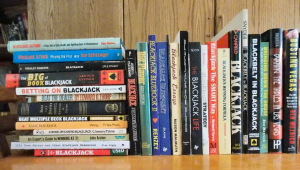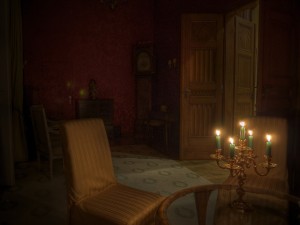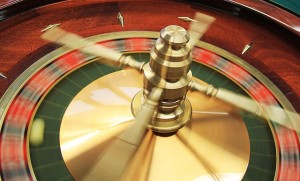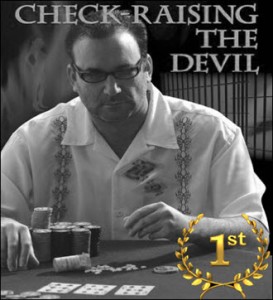
Back in the day, the only place you could go to read a book and gain meaningful knowledge about a subject was the library. This is not the case anymore and there’s no need to tell why. Libraries all over the world are struggling to remain open as the Internet has been slowly overtaking their role in the last two decades.
The article will be divided into an optimistic and pessimistic prognosis about the survival of libraries, because it’s important to read both perspectives and make up your own mind on the matter.
Libraries Will Not Survive
The Internet was initially created for the military, although soon its potential reshaped the original purpose. The World Wide Web was launched in 1989 as a means for scientists and universities to communicate, but even they didn’t expect what was to follow once the Internet reached the average person.
Internet users began creating websites filled with information that could be easily accessed by everyone around the world. True, not that many people had Internet access in the 1990’s, but by the 2010’s, this had swiftly changed.
Wikipedia, dubbed the Free (Internet) Encyclopaedia, was founded in 2001, and it’s now the fifth most visited website, welcoming over 6.1 billion users per month. The topics you can find on the website are truly endless, thus its scope is no match to a physical encyclopaedia.
Wiki is only the tip of the iceberg though. If one is looking for a quick way to learn something new, they can simply Google it and receive millions of results. YouTube has also become the go-to place for users to acquire new knowledge in a manner which can be more interesting than reading a book.
For academic purposes, one can use online peer-reviewed journals as they are easily accessible and offer the academic integrity and reliability that most Internet websites cannot.
Another obstacle to libraries is Amazon. Amazon started off as an online book-seller, but you can now find everything there, including food. Amazon is not a library since you have to purchase the book, but its prices are so competitive that you can easily find books for a dollar or two.
The reader then wonders why they have to go to the library to take a book and then return it, when they can have one delivered for free on the next day with Prime for the price of chewing gum.
The last nail in the coffin of libraries is the e-book.
You no longer have to worry about damaging a book, because the book is just a file. Not only that, but if you want to read a new book in the middle of the night, you can purchase an e-book, which is cheaper than a physical copy. You can also return an e-book (depending on the vendor) if you weren’t immediately captivated by it.
There’s even a free e-book website, Gutenberg (Project Gutenberg), which has so far turned classics and more obscure titles to easily accessible e-books. Gutenberg is gradually becoming a major competitor to the library.
Libraries Will Survive
The library can withstand the test of time, but it will likely change to accommodate the fast-paced world. E-books are generally thought to be harmful to the library model, but libraries have in fact welcomed them warmly.
Many contemporary libraries offer a long list of e-books to the point where e-books make up a quarter or even a third of the titles offered. E-books are cheaper to acquire and easy to store and libraries know this. There’s no limit to the e-books on demand as long as the library software supports them.
The same goes for peer-reviewed online journals. Everyone can easily purchase one, but as opposed to e-books, these journals are very expensive and it doesn’t make sense for a casual reader, not even for a researcher, to buy access to multiple journals when they find a library offering for free.
Libraries also preserve old books that might never be turned into e-books, and as such they are extremely valuable to students, researchers, and avid readers.
The Covid-19 pandemic, for example, has shown that libraries still play an important role in learning and researching, with many students blaming library closures for their lower marks, despite having the whole Internet and even online academic libraries at their disposal.
The communal factor is also not be easily disregarded. Spending time at the library is an experience that many of us cherish and as such we would not allow the Internet to destroy our safe haven. We already live a rather sheltered life, so taking the library away is only going to make matters worse.
Last but not least, of the arguments on why the library will survive is simple – free books. You cannot argue with that, and no matter how many new ways of acquiring knowledge we will create in the future, the library remains the free and fun option for many.

 You know me – I love to read. I’ll read pretty much anything I can get my hands on, whether it’s good or bad. I like to pick up high-profile books that people recommend me (by the way, I seriously appreciate your suggestions, so keep them coming), as well as any stuff from amateur writers that I can get my hands on for cheap on Amazon. And when you read as much as I do, you start to notice some… things. Bad things. Terrible, no-good things. Mistakes is what I’m getting at, and not just mistakes, like a pacing issue, or a plot hole, or a trope/cliché (those are basically unavoidable by even the greatest writers), I mean errors that either should have certainly been caught and fixed by another draft, or are fundamentally embedded into the core of the book to the point where you’d need to go back to the drawing board to correct them. So what the hell, let’s dive in and explore the three worst mistakes fiction writers do! Remember – these apply ONLY to fiction, and are also in no particular order!
You know me – I love to read. I’ll read pretty much anything I can get my hands on, whether it’s good or bad. I like to pick up high-profile books that people recommend me (by the way, I seriously appreciate your suggestions, so keep them coming), as well as any stuff from amateur writers that I can get my hands on for cheap on Amazon. And when you read as much as I do, you start to notice some… things. Bad things. Terrible, no-good things. Mistakes is what I’m getting at, and not just mistakes, like a pacing issue, or a plot hole, or a trope/cliché (those are basically unavoidable by even the greatest writers), I mean errors that either should have certainly been caught and fixed by another draft, or are fundamentally embedded into the core of the book to the point where you’d need to go back to the drawing board to correct them. So what the hell, let’s dive in and explore the three worst mistakes fiction writers do! Remember – these apply ONLY to fiction, and are also in no particular order! Most people prefer the feeling of a real, dead tree book in their hands – the smell, the texture, the sound of pages being turned, the knowledge that you’re getting further into the story as the right side of the book becomes smaller… I’m not one of those people, though. Personally, I’m all about those eBooks. I love them! I can’t get enough of them! I find them easier and faster to read, and I don’t need to be lugging around a large brick with me everywhere in order to get my daily fix. The eternal debate of which is better – physical or eBook – will rage on until one format becomes obsolete, with the memes and various posts made on the Internet about it ranging from “sensible” to “hilariously bad” (a particular example I can think of is a very upvoted image where a user proudly proclaimed that a Kindle will never be as impressive as a fully stocked library – and honestly, if you’re just getting books to impress people with your collection, you’re reading for the wrong reasons). Still, I do need to give credit where credit is due, and the fact of the matter is that if you prefer physical books, it’s way easier to get them for free. All you need to do is waltz into the local library, browse around and then check out whatever it is you want. Easy peasy! Ebooks enjoy regular sales on marketplaces like Amazon, but generally, you can’t really obtain them for free legally in the same way that you’d be able to get physical books. Or can you?
Most people prefer the feeling of a real, dead tree book in their hands – the smell, the texture, the sound of pages being turned, the knowledge that you’re getting further into the story as the right side of the book becomes smaller… I’m not one of those people, though. Personally, I’m all about those eBooks. I love them! I can’t get enough of them! I find them easier and faster to read, and I don’t need to be lugging around a large brick with me everywhere in order to get my daily fix. The eternal debate of which is better – physical or eBook – will rage on until one format becomes obsolete, with the memes and various posts made on the Internet about it ranging from “sensible” to “hilariously bad” (a particular example I can think of is a very upvoted image where a user proudly proclaimed that a Kindle will never be as impressive as a fully stocked library – and honestly, if you’re just getting books to impress people with your collection, you’re reading for the wrong reasons). Still, I do need to give credit where credit is due, and the fact of the matter is that if you prefer physical books, it’s way easier to get them for free. All you need to do is waltz into the local library, browse around and then check out whatever it is you want. Easy peasy! Ebooks enjoy regular sales on marketplaces like Amazon, but generally, you can’t really obtain them for free legally in the same way that you’d be able to get physical books. Or can you? My love for blackjack started several years ago when I spent a night at the casino with friends. It was the first time I had played blackjack and I was astounded at how thrilling and enthralling the experience was. Yet it quickly became clear to me that I didn’t really know what I was doing. There were some players who won time and again, and it made me wonder what their secret was. Were they secretly counting the cards, or was lady luck simply on their side that night? As a self-professed book worm, I decided to research the game and try to brush up on my skills. I was amazed at the sheer volume of books I found on
My love for blackjack started several years ago when I spent a night at the casino with friends. It was the first time I had played blackjack and I was astounded at how thrilling and enthralling the experience was. Yet it quickly became clear to me that I didn’t really know what I was doing. There were some players who won time and again, and it made me wonder what their secret was. Were they secretly counting the cards, or was lady luck simply on their side that night? As a self-professed book worm, I decided to research the game and try to brush up on my skills. I was amazed at the sheer volume of books I found on  In order to become a successful poker player that can live out of the game, you have to take your time in educating yourself about the game and the different strategies that you can use. Remember that poker is primarily a game of strategy and, therefore, the more you know compared to the other players at the table, the better your chances will be to leave the game victorious. Below, I will present to you three books that many players found very useful, especially in the beginning of their poker careers. Let’s start with the book of one of the public’s favourite poker stars – Daniel Negreanu.
In order to become a successful poker player that can live out of the game, you have to take your time in educating yourself about the game and the different strategies that you can use. Remember that poker is primarily a game of strategy and, therefore, the more you know compared to the other players at the table, the better your chances will be to leave the game victorious. Below, I will present to you three books that many players found very useful, especially in the beginning of their poker careers. Let’s start with the book of one of the public’s favourite poker stars – Daniel Negreanu. If you’re even remotely interested in videogames, chances are you’ve heard of a franchise known as “The Witcher”. The first game, released in 2007, gained gigantic critical acclaim for its complex storyline and characters and interesting battle and character development systems (which haven’t really aged all that well, admittedly). Its success gave the developer, an unknown Polish studio by the name of CD Projekt RED, worldwide recognition, allowing them to release “The Witcher 2” in 2011 and, of course, “The Witcher 3”, which won 2015’s Game of the Year award. The series is universally beloved by gamers everywhere… But did you know that they’re actually a sequel to a whole bunch of novels? And that the novels are WAY older than the games? It’s true!
If you’re even remotely interested in videogames, chances are you’ve heard of a franchise known as “The Witcher”. The first game, released in 2007, gained gigantic critical acclaim for its complex storyline and characters and interesting battle and character development systems (which haven’t really aged all that well, admittedly). Its success gave the developer, an unknown Polish studio by the name of CD Projekt RED, worldwide recognition, allowing them to release “The Witcher 2” in 2011 and, of course, “The Witcher 3”, which won 2015’s Game of the Year award. The series is universally beloved by gamers everywhere… But did you know that they’re actually a sequel to a whole bunch of novels? And that the novels are WAY older than the games? It’s true! Let’s set up the scene a bit, shall we? Imagine that you live in Japan, a country which not too long ago faced one of the biggest, most terrifying attacks in history in the forms of the Hiroshima and Nagasaki bombings. Your parents have lived through it, and they have told you of the countless horrors they’ve encountered – people scorched and burned to death, people killing each other over resources, people gradually dying due to radiation poisoning. You grow to resent violence and death, but surprisingly, most people of your generation, and the young ones from the next one, don’t seem to share your opinion. They adore violent pop culture such as movies and manga (Japanese comic books). The more violent it is, the better. How do you write a book that can show the horrors of violence to a young, contemporary audience while trying not to have the message too “in your face”? You write “Battle Royale”.
Let’s set up the scene a bit, shall we? Imagine that you live in Japan, a country which not too long ago faced one of the biggest, most terrifying attacks in history in the forms of the Hiroshima and Nagasaki bombings. Your parents have lived through it, and they have told you of the countless horrors they’ve encountered – people scorched and burned to death, people killing each other over resources, people gradually dying due to radiation poisoning. You grow to resent violence and death, but surprisingly, most people of your generation, and the young ones from the next one, don’t seem to share your opinion. They adore violent pop culture such as movies and manga (Japanese comic books). The more violent it is, the better. How do you write a book that can show the horrors of violence to a young, contemporary audience while trying not to have the message too “in your face”? You write “Battle Royale”.  There are many books written about the classic casino game roulette, but undoubtedly one of the best ones is Frank Scoblete’s Spin Roulette Gold: Secrets of Beating the Wheel. This book is one of the highest rated roulette titles on Amazon, scoring 4.6 stars out of 5. Furthermore, it enjoys many positive reviews from experts as well as from regular players. Frank Scoblete, on the other hand, is one of the best-selling authors on the topic of casino gaming who is famous for his fun yet informative writing style easily digestible by the general public and not only by casino pros. Other great titles by Scoblete that you might want to check out are: The Expert’s Guide To Casino Gambling, Beat the Craps Out of the Casinos: How to Play Craps and Win! and Guerrilla Gambling: How to Beat the Casinos at Their Own Games.
There are many books written about the classic casino game roulette, but undoubtedly one of the best ones is Frank Scoblete’s Spin Roulette Gold: Secrets of Beating the Wheel. This book is one of the highest rated roulette titles on Amazon, scoring 4.6 stars out of 5. Furthermore, it enjoys many positive reviews from experts as well as from regular players. Frank Scoblete, on the other hand, is one of the best-selling authors on the topic of casino gaming who is famous for his fun yet informative writing style easily digestible by the general public and not only by casino pros. Other great titles by Scoblete that you might want to check out are: The Expert’s Guide To Casino Gambling, Beat the Craps Out of the Casinos: How to Play Craps and Win! and Guerrilla Gambling: How to Beat the Casinos at Their Own Games. “For the talented, Jack Binion is fond of saying, Las Vegas is the land of milk and honey, and for the rest it is a burial ground”</>, says Al Alvarez in his book – The Biggest Game in Town and may I just add that I couldn’t agree more. But why did I choose this particular book to begin with? Because you should always know the rules and risks of any game before you start playing, right? And at the end of the day, this is what gambling is and it should be treated as such.
“For the talented, Jack Binion is fond of saying, Las Vegas is the land of milk and honey, and for the rest it is a burial ground”</>, says Al Alvarez in his book – The Biggest Game in Town and may I just add that I couldn’t agree more. But why did I choose this particular book to begin with? Because you should always know the rules and risks of any game before you start playing, right? And at the end of the day, this is what gambling is and it should be treated as such.  Hey there, Internet! Abbie Ball here, back with another book recommendation! I know it may not look like it, but I really do care about this little blog of mine. If it was up to me, I’d have updated it every single day, but unfortunately school and other stuff has kept me away from it for the time being. I won’t bore you with the details, but suffice to say I’ve been one busy bee! But I have been working on the site, and I’ve prepared some pretty cool stuff for you, guys! Most of it is just new content – another top 3, some book reviews (including one of a book that was actually requested of me, believe it or not), but the biggest changes I’ve got in store are aesthetic. Let’s face it, my blog… just doesn’t have the best design in the world. It’s kinda like boxed wine – it gets the job done, but that doesn’t mean it’s good. Good news is that I’ve been meaning to update it! Bad news is I don’t know the first thing about web design. I asked around, and I was recommended
Hey there, Internet! Abbie Ball here, back with another book recommendation! I know it may not look like it, but I really do care about this little blog of mine. If it was up to me, I’d have updated it every single day, but unfortunately school and other stuff has kept me away from it for the time being. I won’t bore you with the details, but suffice to say I’ve been one busy bee! But I have been working on the site, and I’ve prepared some pretty cool stuff for you, guys! Most of it is just new content – another top 3, some book reviews (including one of a book that was actually requested of me, believe it or not), but the biggest changes I’ve got in store are aesthetic. Let’s face it, my blog… just doesn’t have the best design in the world. It’s kinda like boxed wine – it gets the job done, but that doesn’t mean it’s good. Good news is that I’ve been meaning to update it! Bad news is I don’t know the first thing about web design. I asked around, and I was recommended